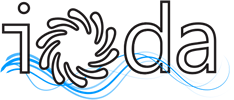Computational Geometry, CAD Systems, mesh morphing, return to CAD
Opencascade, Chantilly, Paris 17 - 20 January 2016
Overview
The training event organized at Open Cascade focussed on Computer Aided Design (CAD) systems. The content of the course provided the audience with an insight into the working principles of a CAD system. In contrast to most CAD courses the main aim is was not to demonstrate the capabilities of a CAD system and how to interact with it, but instead to reveal the underlying algorithms that provided 3D drawing functionalities. This enabled the participants to understand the foundations of CAD modeling, and the inherent difficulties to expect when differentiating such codes.
The course outline was:
- Introduction to CAD systems and their role in the design chain
- Capabilities of CAD programmes
- Solid representation: CSG, BRep, Mesh, Voxel
- Demonstration of 3D modeling by Sketcher and features
- Manifold vs. non-manifold
- Geometry algorithms
- Bezier, BSpline, NURBS curves and surfaces
- Derivatives of curves, surfaces, curvature of curves and surfaces
- Arc length along a curve
- Extending curves continuously
- Point inversion algorithms for curves and surfaces (projection of point on geometry)
- Interpolation of a set of points by BSpline curve
- Approximation of a set of points by BSpline Curve
- Approximation of analytical description of curves and surfaces
- Skinning/Sweep feature: interpolating a set of curves by a surface
- Curve-curve, curve-surface and surface-surface intersection
- filleting by roling ball analogy
- Tolerances and their impact on BRep representation
- Self-intersection
- Accelerating techniques (bounding boxes, space partitioning)
- Topology
- Topology in the STEP file format
- Non-manifold and multi-dimensional representation
- Tolerances
- Sharing identical topological elements among different models
- Meshing
- Visualisation
- Rasterizing (OpenGL)
- Ray Tracing
- Differentiation of CAD systems
- Finite Differences
- QUB approach to the problem
- Automatic differentiation
- FEM tools

